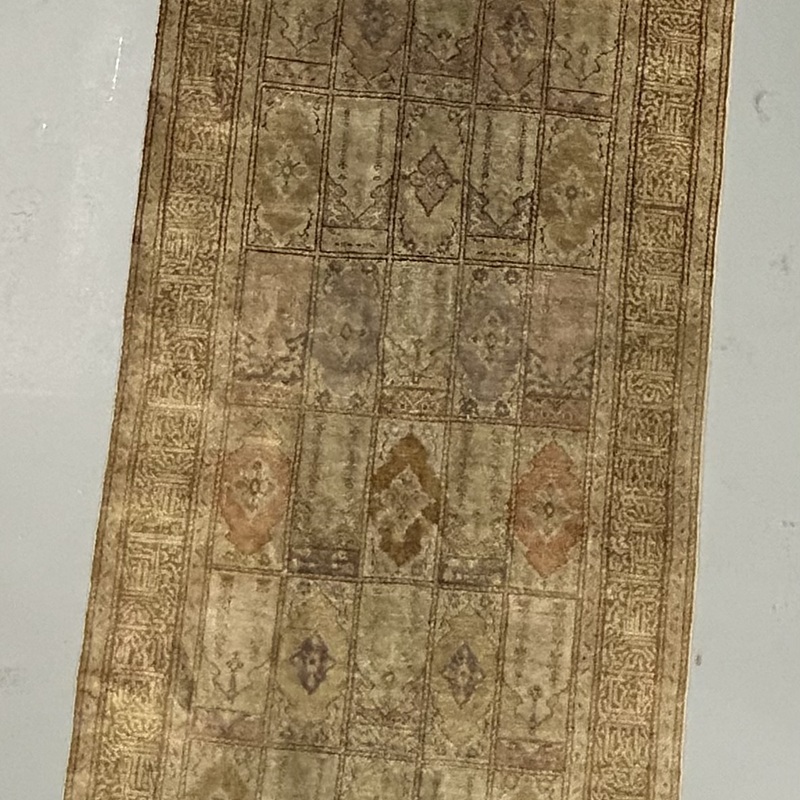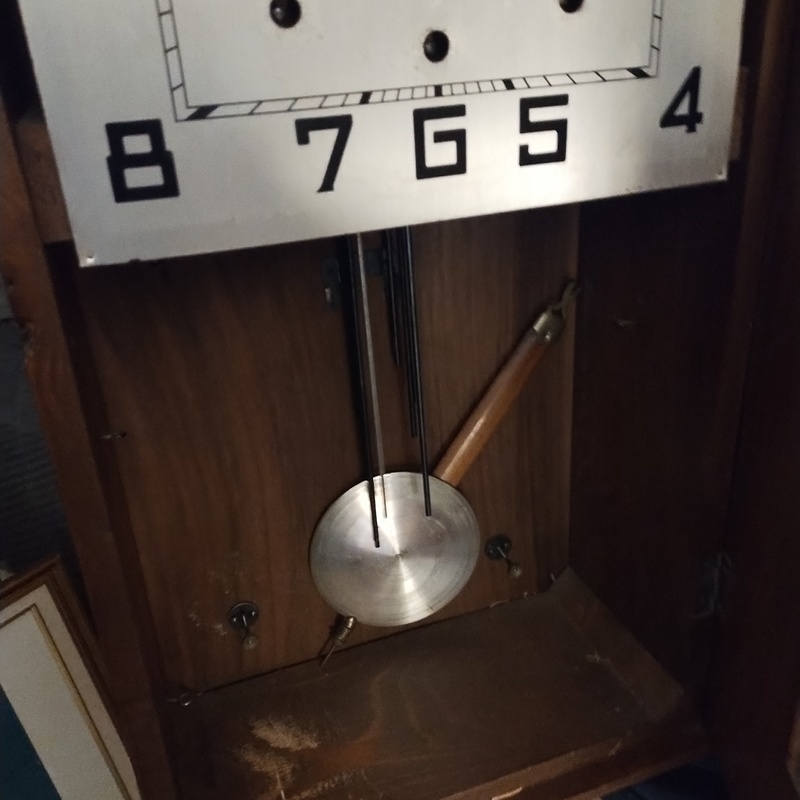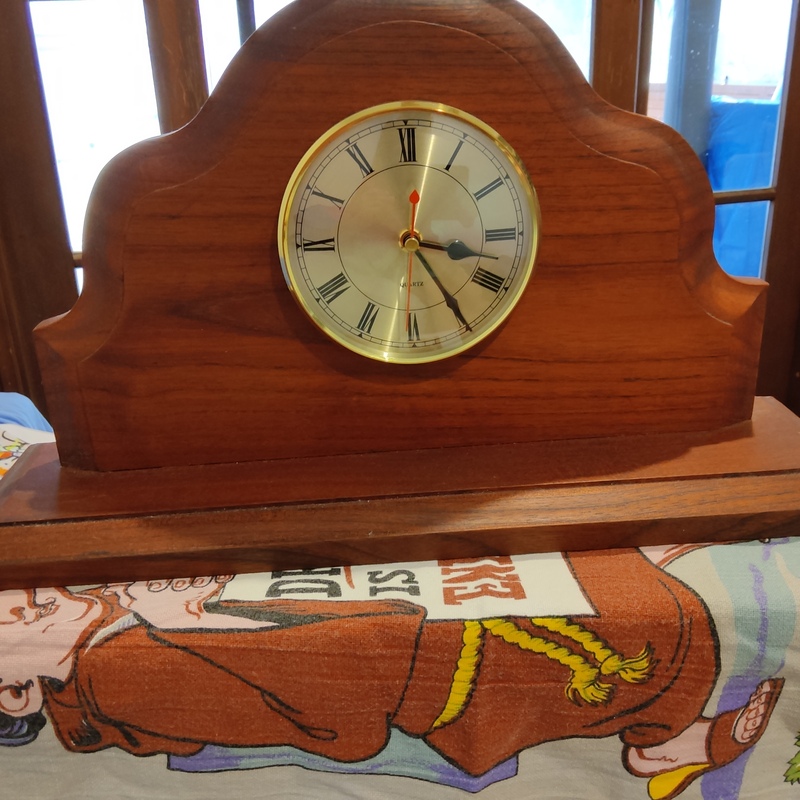



Mid-Nineteenth Century Clock with Glass Dome (commonly called a skeleton clock)
12. Mid-Nineteenth Century Clock with Glass Dome (commonly called a skeleton clock). This clock has brass works and enameled metal open work face, Gothic detailing under a glass dome. Approximate dimensions: 9” x 9” x 17-1/2”h overall. Condition good working condition. Insurance appraised in 1995 for $1200.
Inherited from my mother's estate.
Inherited
No


Hello Graham,
Thank you for sending in your skeleton clock to mearto.com for an appraisal. I shall try to help you with that today.
TITLE:
Brass, single fusee, hourly striking, four pillar skeleton clock, on wooden base with glass dust cover, Unsigned by the maker, made in London, England, 3rd quarter of the 19th century. . .
DESCRIPTION:
CASE - 17.5” x9” x 9” solid brass scrolled frames (plates) connected by four tapered and ringed brass pillars, screwed together at the front plate and usually pinned at the rear plate. At the top there are three steel fenestrated steeples in imitation of a Cathedral with the bell for striking between the two plates. The clock rests on a stepped round wooden platform and is covered by a round glass dust cover dome. The base of the dome is surrounded by what appears to be rope. These open fretwork frames showed the skill of the young clockmaker in designing his skeleton clock and he was trying to imitate early Cathedral shapes with scrollwork and flying buttress forms. These were rarely signed by the maker, sometimes by the retailer…
DIAL - This is a skeletonized silvered brass dial, with scalloped edges on the outside as well as around a large central aperture in the dial center. There are black painted Roman hours with shaped openings between the hour markers and an open dotted minute track. There are steel Continental steel ‘Spade’ hands and, as expected, no signature on the dial.
MOVEMENT – This is a brass, single, chain driven fusee, spring powered movement of eight-day duration with an anchor escapement, steel cut pinions, steel arbors and a cone shaped grooved winding drum to take up the chain on the fusee from the barrel holding the actual steel spring. There is a simple fall-off strike on the hour. The silvered bell is struck by a brass axe-shaped hammer at the top of the movement. A metal pendulum rod hangs from the pendulum suspension at the rear of the movement and has a small brass bob below, very much in the English style. The movement rests on brass bell shaped feet connecting to the platform below it. . .
CONDITION - I find the clock and base in very fine condition, having the classical look of this most traditional of London forms, a very handsome appearance and appears to be well made. The brass also has a nice old patina and should not be polished. This is the classic design of London skeleton clocks. One assumes that the glass dust cover is original or at least of the Period. . .
HISTORICAL:
The brass framed skeleton clock first appears in France in the mid-eighteenth century. Famous makers such as Le Roy, Lepaute, Berthoud and Lepine manufactured these early clocks under a glass dome. England began production by 1820 producing a steady stream of these mantel clocks until they went out of fashion just before WWll. The English version utilized a fusee driven movement while the French clocks did not. In France the movements and cases had a far more ornate look and feel than the English varieties. In all these clocks the entire movement could easily be visualized inside the glass dome. The brass plates were narrow and frequently skeletonized so that the handiwork of the clock maker was readily seen. This style of clock reached its zenith during the second half of the nineteenth century, when there was a renewed interest in all things mechanical. This type of skeleton clock fit in perfectly with new age of industry and the value of technologic knowledge. There are essentially two major categories of this type of clock. There is the architectural style which frequently took the form of a cathedral, and the ornate style. The brass can be either cast or hand pierced. The bases were of marble, walnut mahogany or painted black with a velvet covered center.
Generally, the glass dome either fit into a groove on the base or the base was "stepped" in such a way as to hold the glass dome firmly in place. . .
Comparing this example to others like it on the market in the past couple of years, I feel that it has a fair market value today in the $450-$550 range. Retail prices would be higher of course. I hope you have found this helpful.
My best,
David









